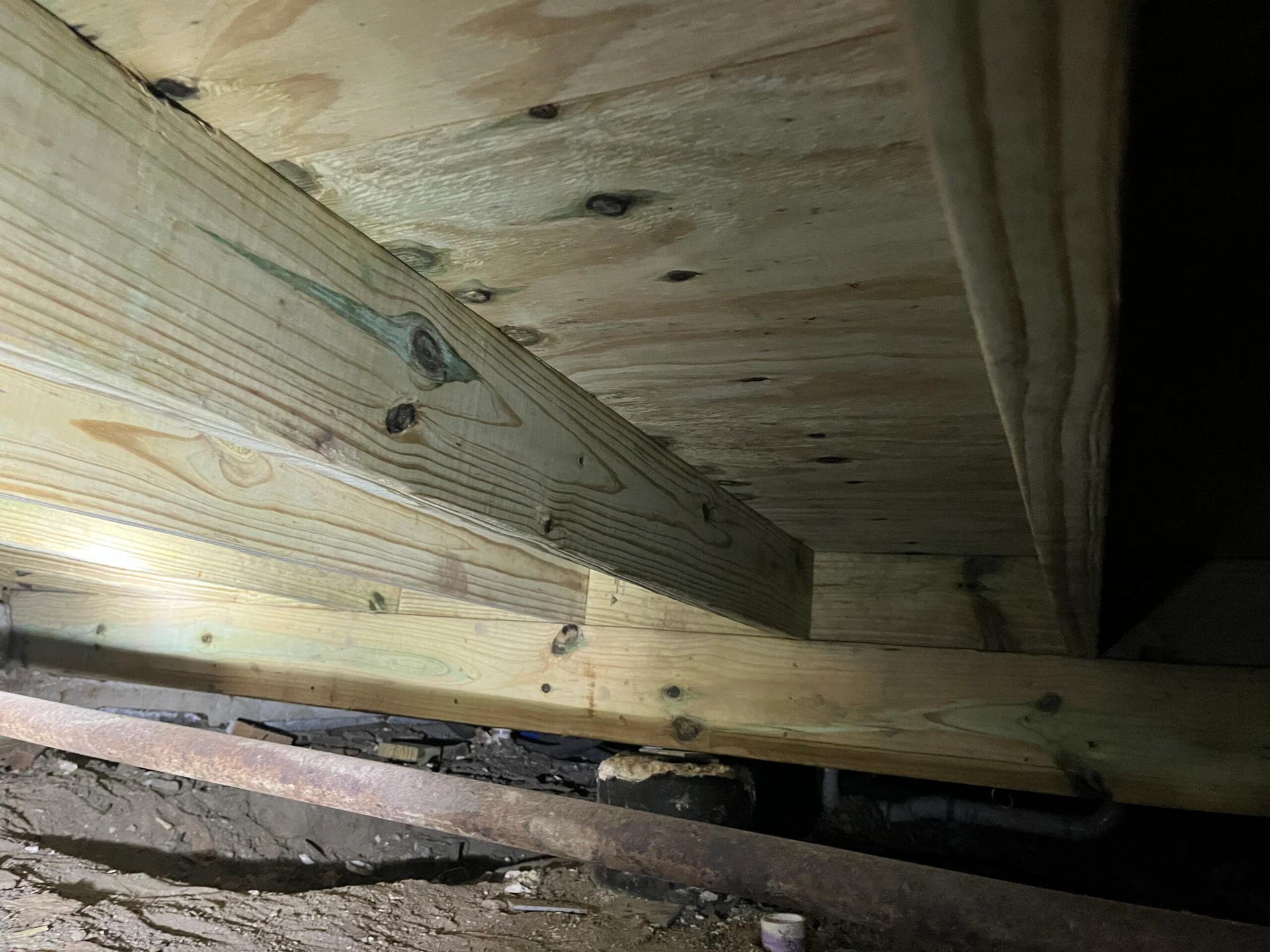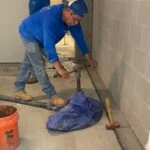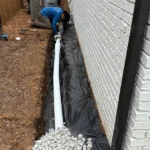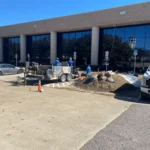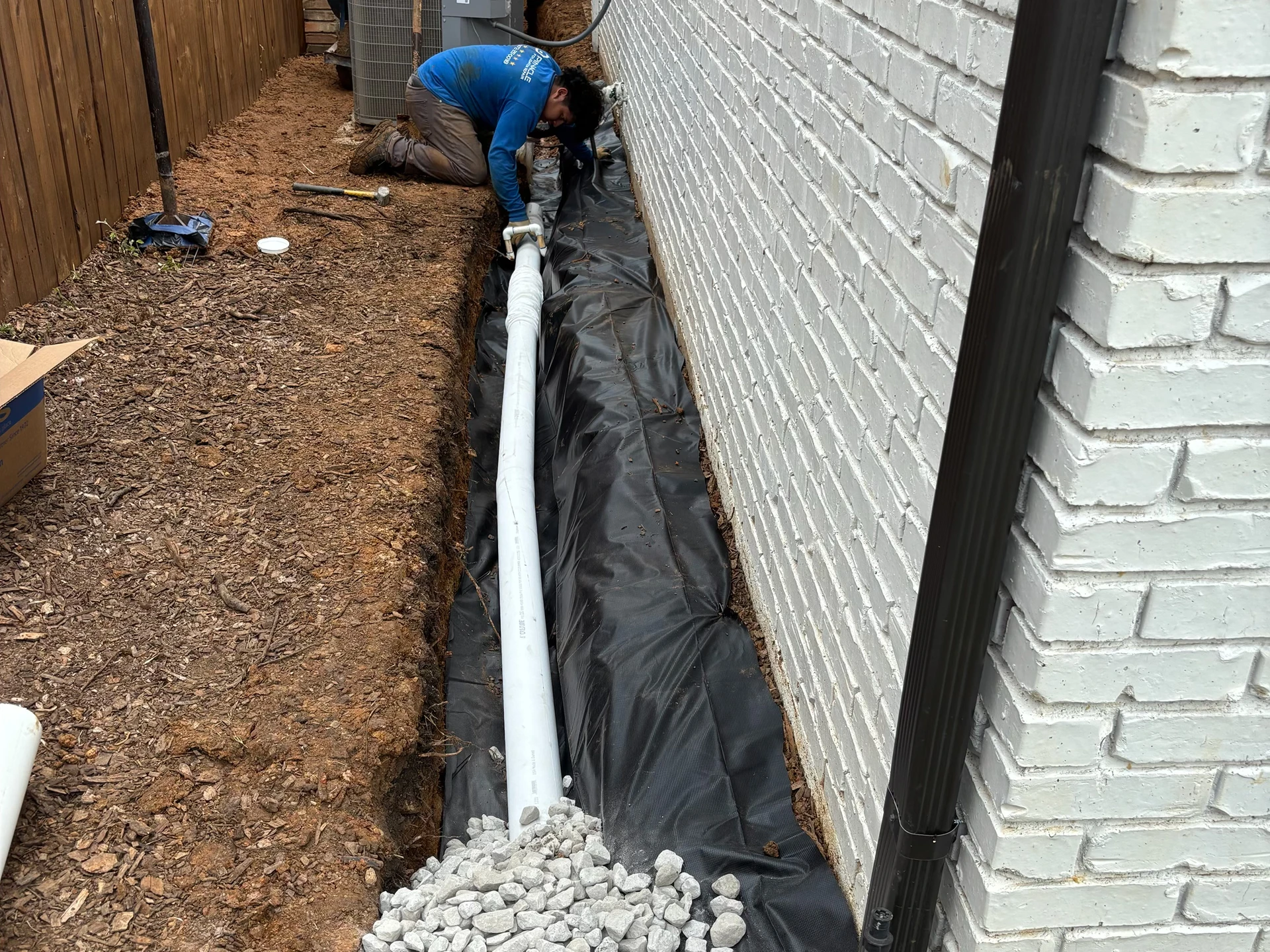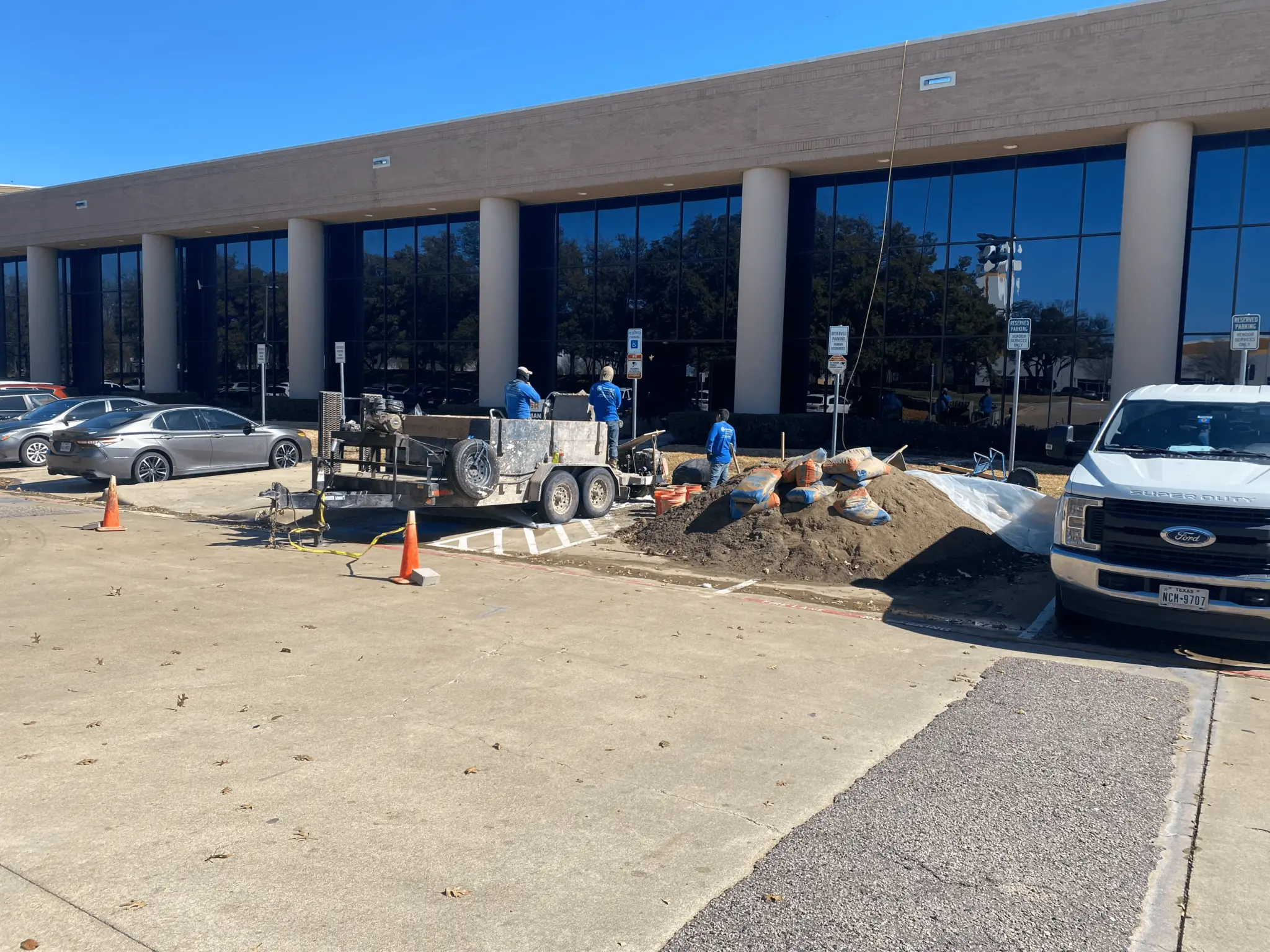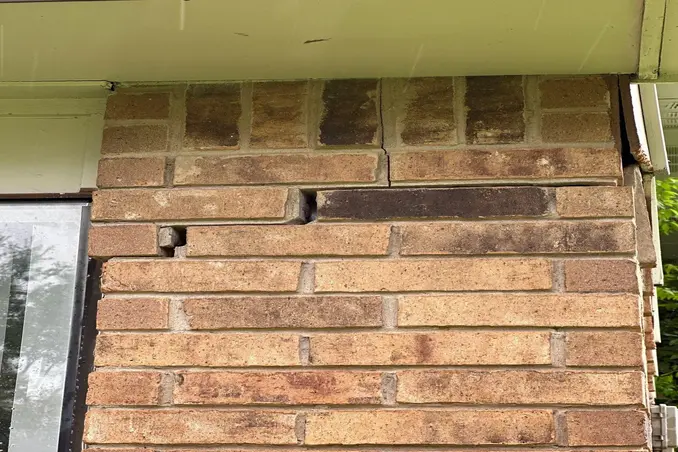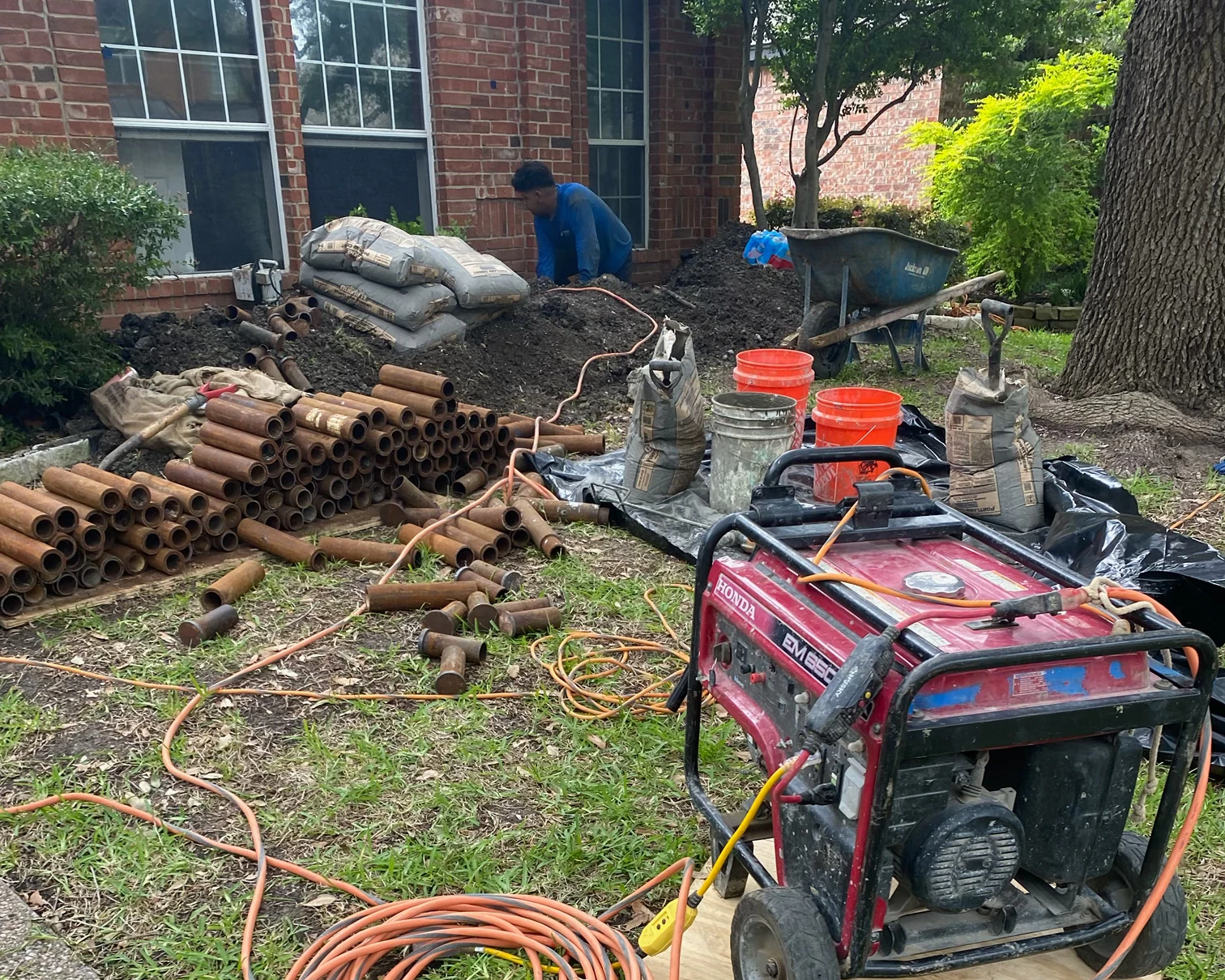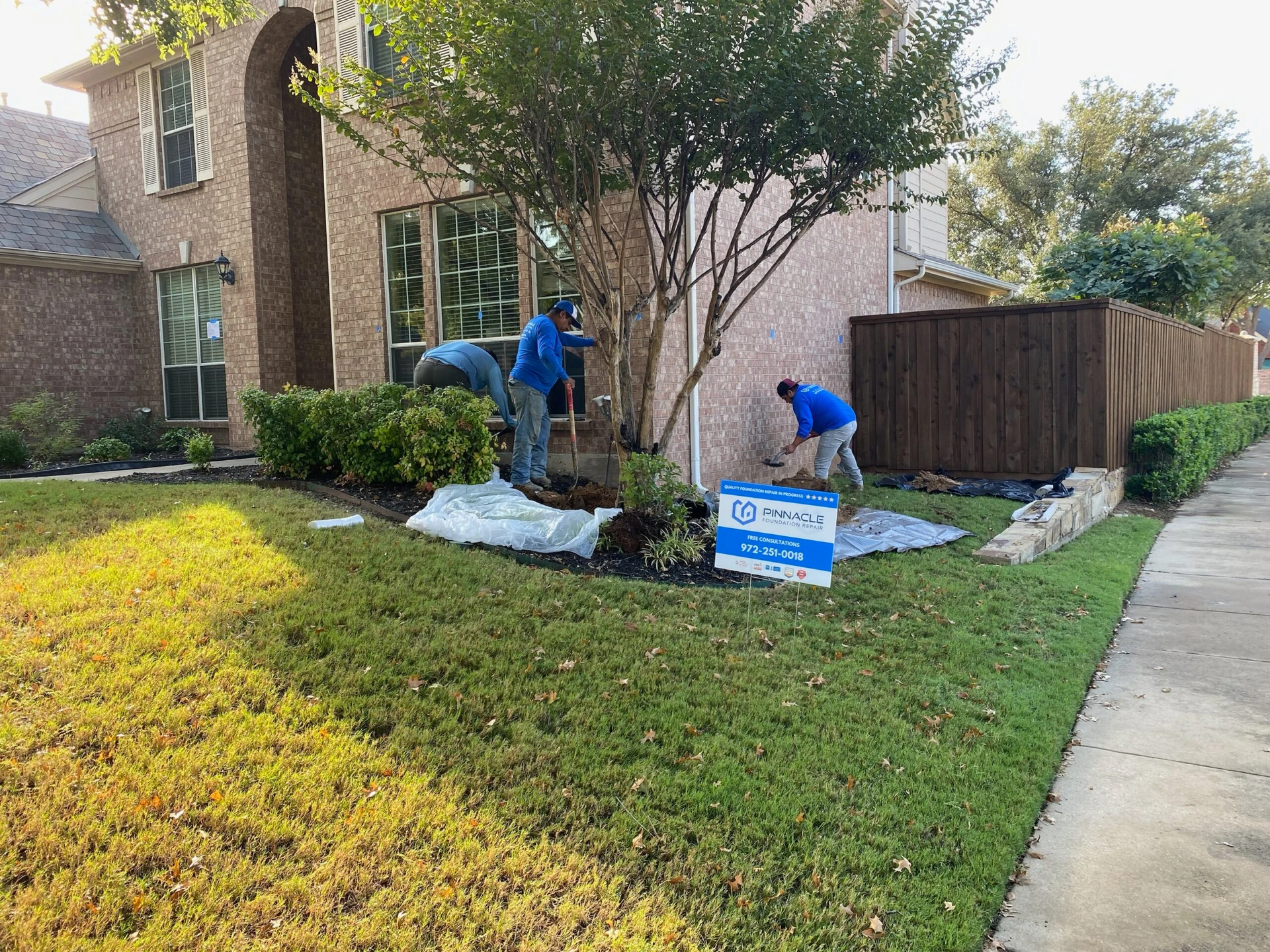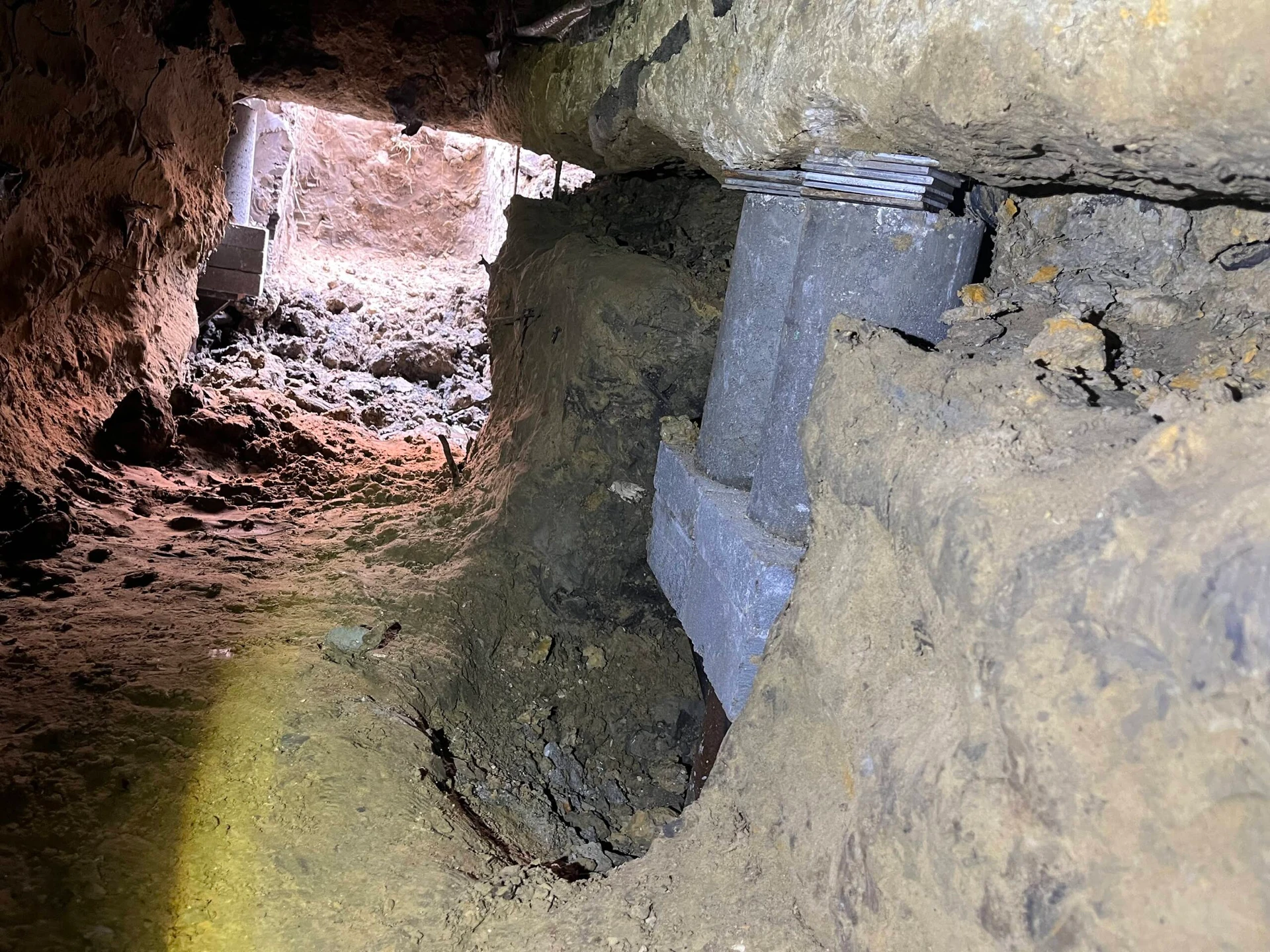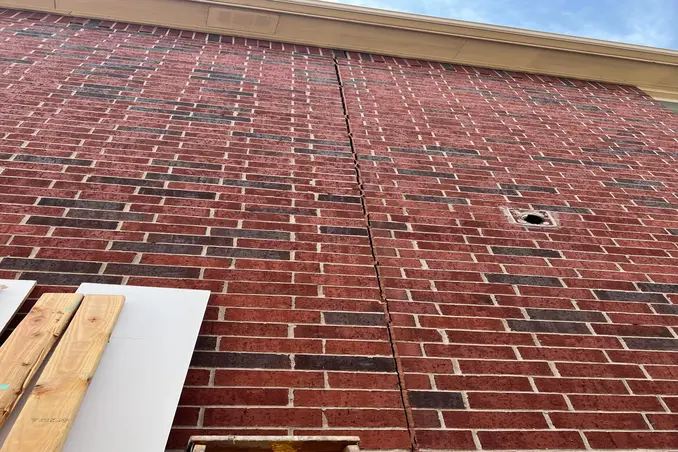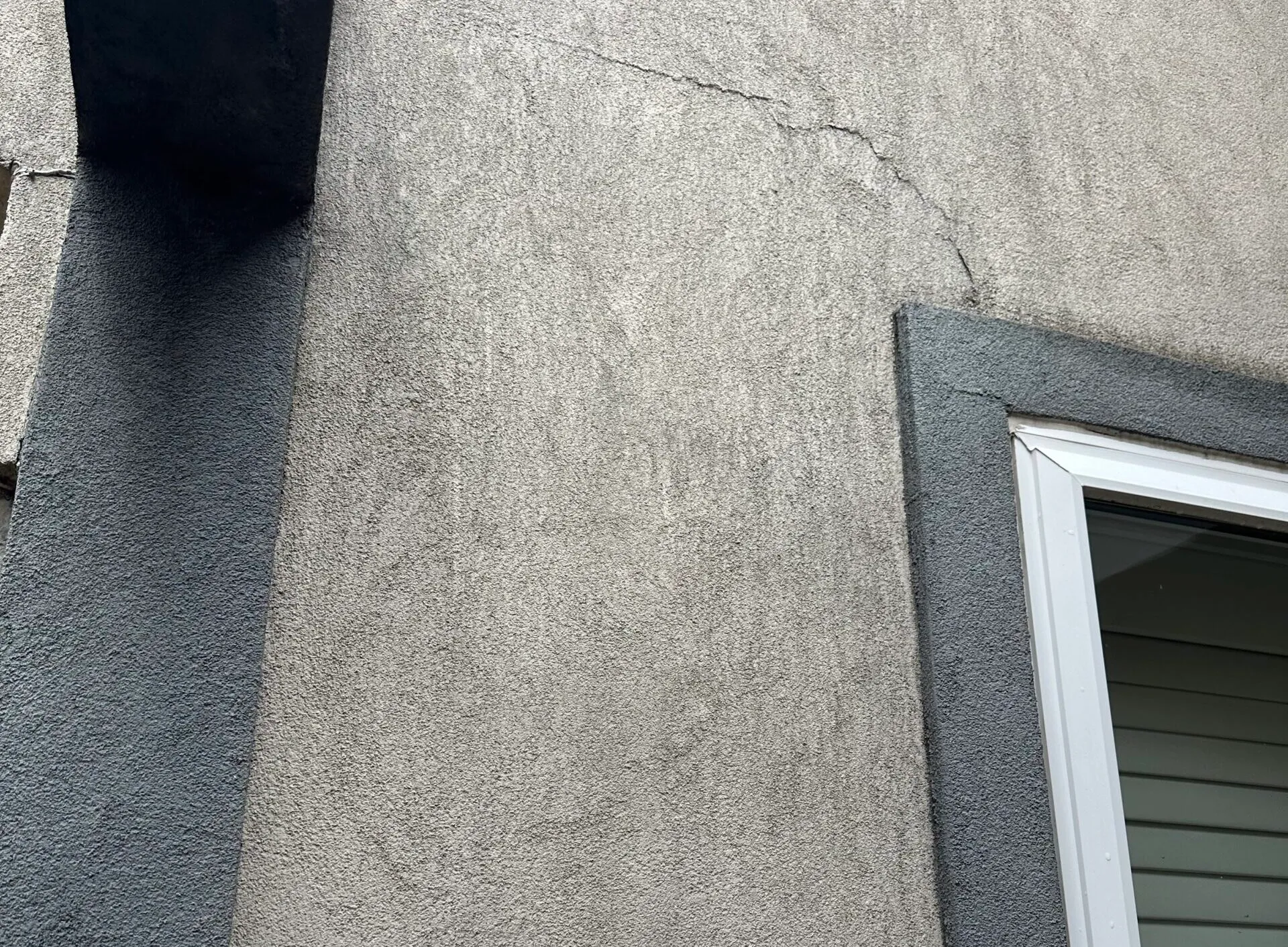If you’re a homeowner in North Texas, you’ve probably come across the term “crawl space foundation”, especially if your home was built before 1960, when modern concrete slab foundations started gaining popularity. But what does a crawl space foundation actually mean for your home? And is it the same thing as a home with a pier & beam or a block & base foundation? Understanding these differences can help you maintain your home better and keep it safe from potential foundation issues. Let’s dive in!
What Is a Crawl Space Foundation?
A crawl space foundation is a type of foundation that elevates your home above the ground, creating a small space – usually between 18 inches and 4 feet high – between the ground and the bottom of your house. This space allows for plumbing and electrical work, as well as ventilation and water drainage, which can prevent moisture buildup and keep your home dry.
In North Texas, where the soil can shift with the changing seasons, crawl space foundations can really come in handy. But the type of crawl space foundation you have plays a big role in your home’s stability, drainage, and how much upkeep it needs. It’s important to know what you’ve got so you can keep your home safe and sound! There are two main types of crawl space homes most commonly used in Texas: Pier & Beam, and Block & Base.
Pier & Beam Foundations
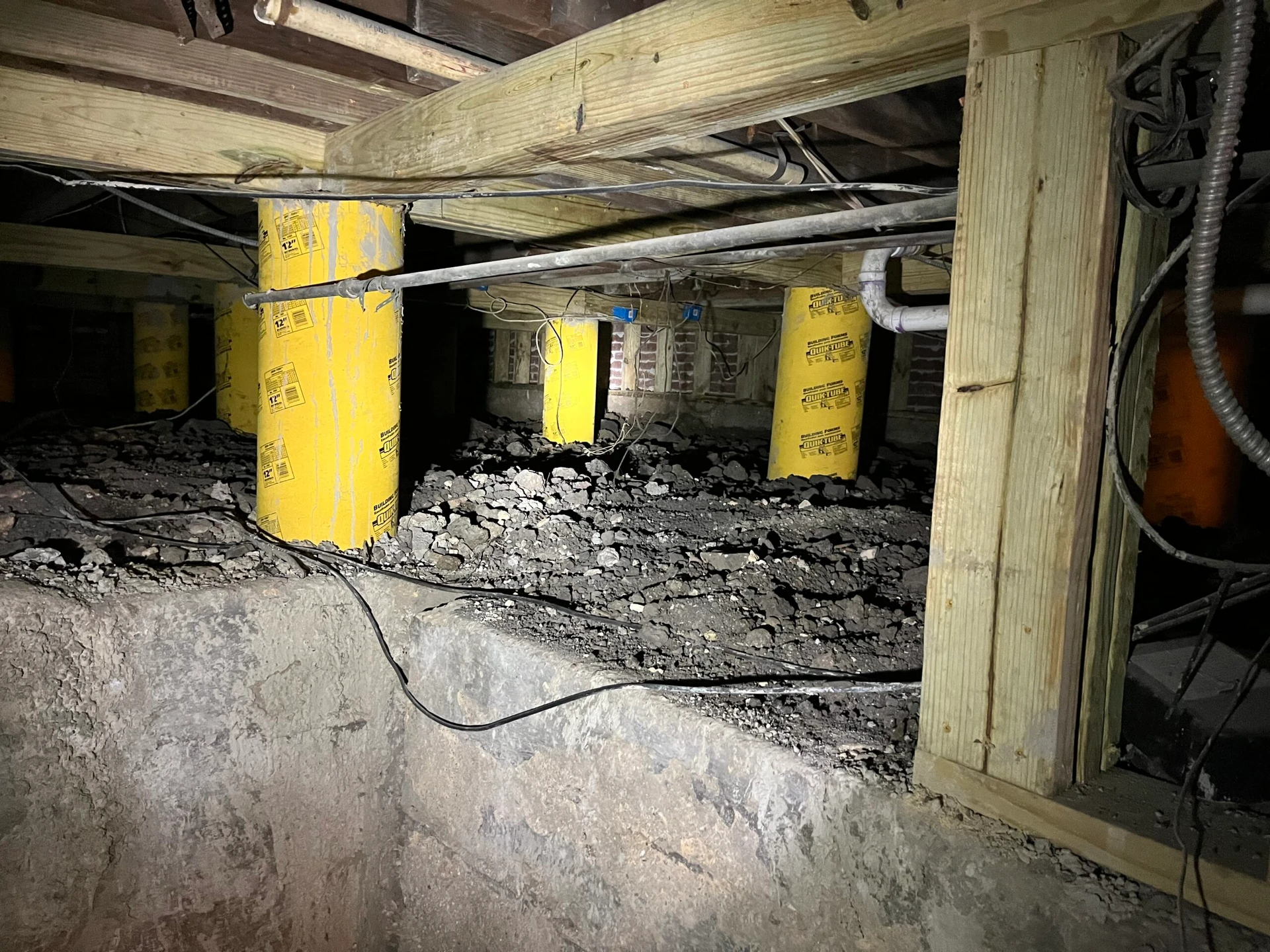
Let’s start with the first type: pier & beam foundations. As the name suggests, this foundation is built on piers – these are vertical concrete columns that lift your home above the ground, creating a crawl space underneath. The beams connect the wooden beams and joists that support the weight of your house.
One of the standout features of pier & beam foundations is their flexibility. Because the foundation is elevated above the ground, it can better adapt to shifting soil conditions, which is important in our North Texas climate. If the soil settles or shifts, causing foundation issues in your home – it’s often easier to simply adjust or shim sagging piers than to deal with more extensive repairs. And if your property has poor drainage or is built on a sloped lot, a pier & beam foundation is a great choice. Since it’s raised off the ground, it allows water to flow beneath rather than pooling against the foundation.
Another advantage? Accessibility! With a crawl space beneath, homeowners and work crews can easily access plumbing and electrical systems for repairs or maintenance, without having to rip up any existing concrete slab. Plus, if you ever need to run new wiring or plumbing for home renovations, you’ve got the space to do so.
However, there are some considerations to keep in mind. Pier & beam foundations can be more susceptible to moisture problems if not properly ventilated. This is where our “radically honest” approach comes in at Pinnacle. We believe in transparency, so we’ll let you know if your home’s foundation needs more ventilation to prevent issues down the road. If you’re worried about this – contact us for a free, no obligation foundation inspection and we’ll walk you through any potential issues your foundation may be facing.
Block & Base Foundations
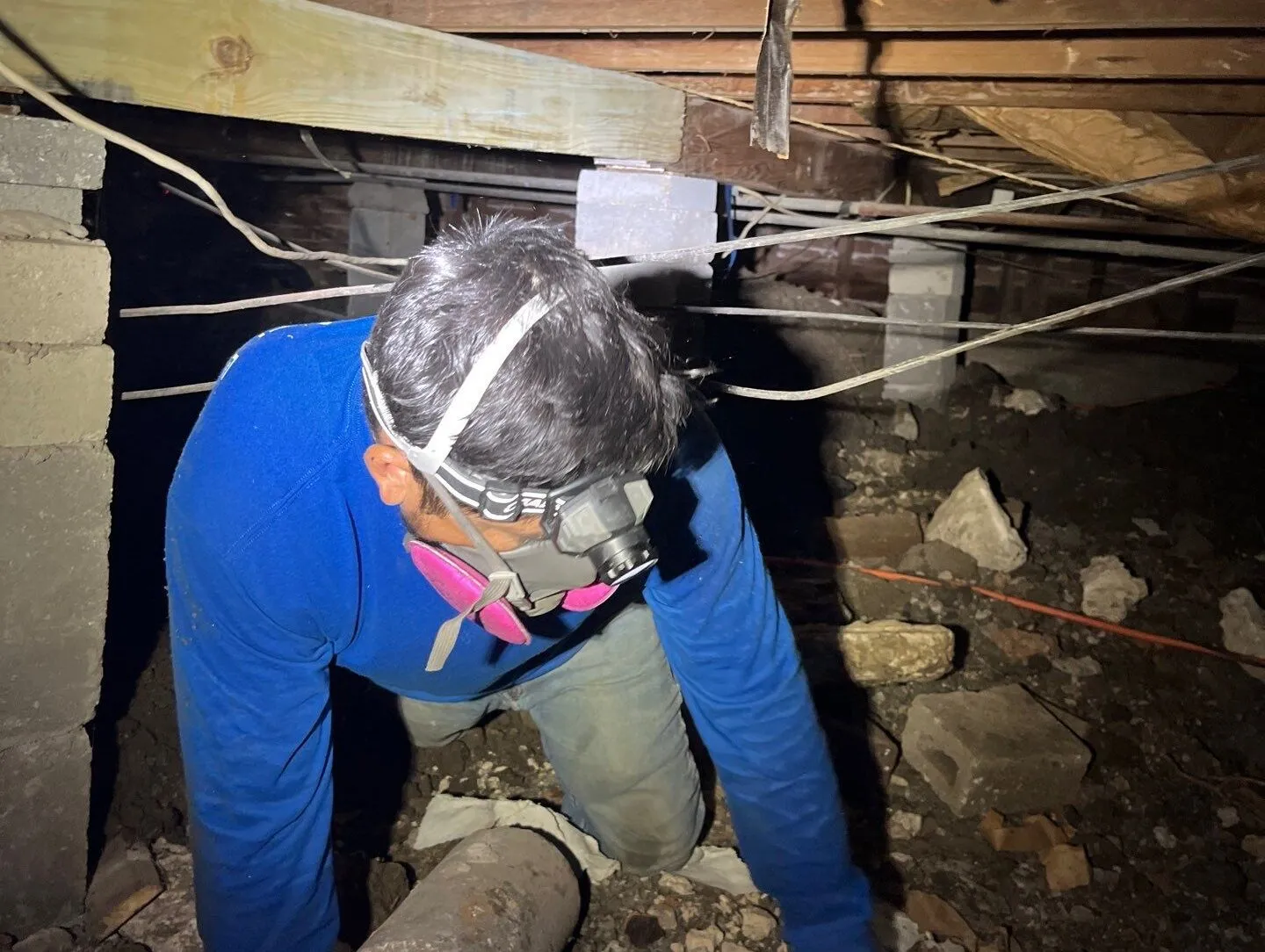
Now let’s talk about block & base foundations. Instead of piers, this type relies on multiple concrete blocks to support your home. The blocks are stacked in a grid-like pattern on a concrete footing base, creating a sturdy platform that lifts your house off the ground. (Note – sometimes the supportive blocks are made from stone, bricks, or even timber, but concrete is the most common and the most sturdy).
Block & base foundations can be a solid choice, particularly for homes in areas where the soil conditions are relatively stable. They often require less ongoing maintenance compared to pier & beam foundations. However, this does not mean they are without their own challenges.
One downside is that if there’s a problem, such as soil settling or shifting, it can be more complicated to address. With block & base, the entire foundation system may need adjustments rather than just a few piers. It’s important to keep an eye on any signs of foundation issues, like cracks in walls or doors that stick, as these can indicate deeper problems.
What about Foundation Skirting?
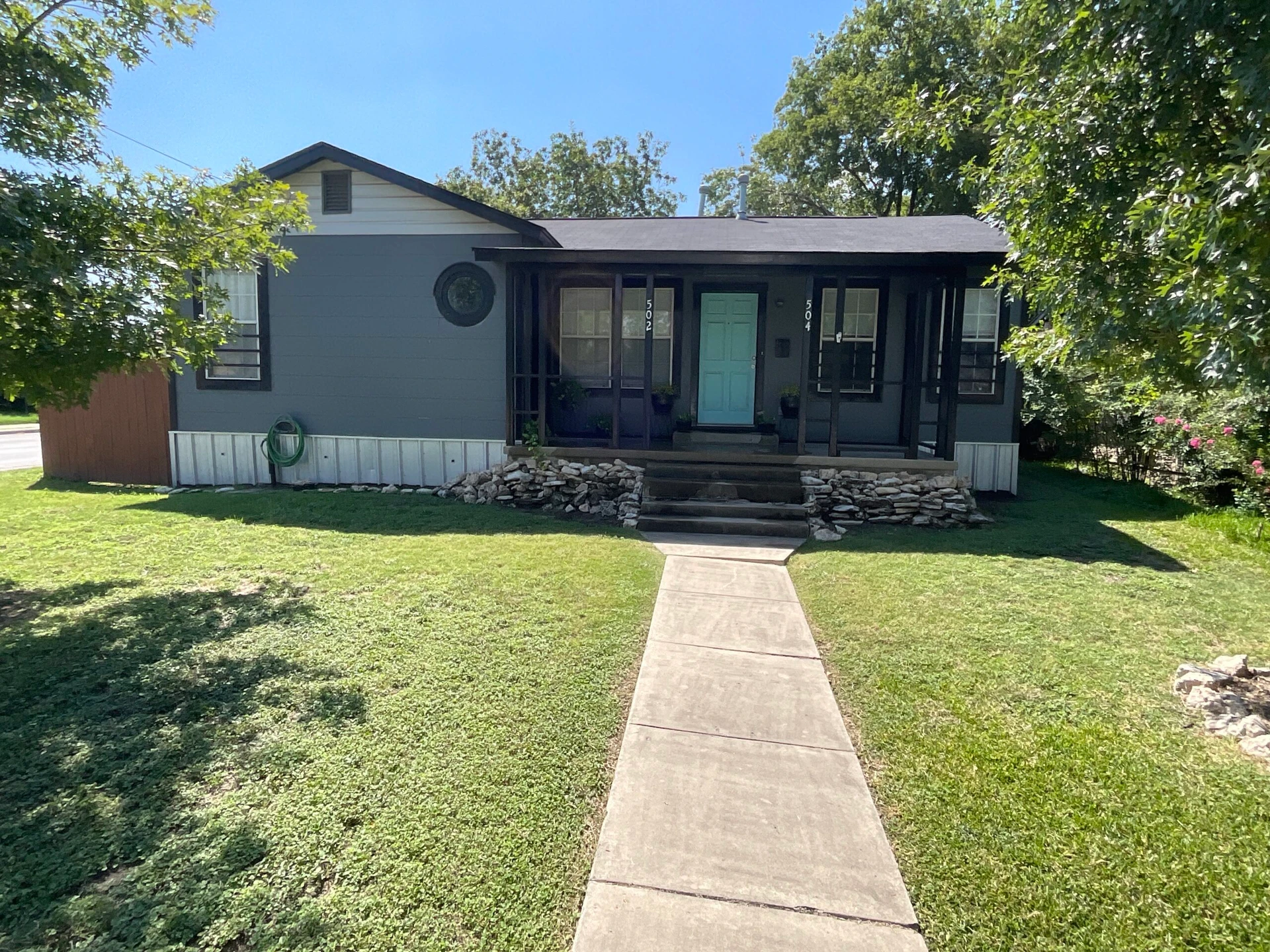
While some crawl space homes are just left open so you can see the blocks and piers from the outside, many homeowners opt to add skirting around their homes. Skirting is a protective barrier that wraps around the perimeter of your crawl space and house, built in the space between the ground and your exterior walls.
Foundation skirting not only makes your crawl space home look better from the outside, but it also offers some great practical perks. Skirting helps keep critters out from under your house, seals off the crawl space for warmth and insulation during the winter months, and conceals essential components like gas, water, sewer lines, and piers.
When it comes to materials for skirting, you’ve got a few choices. Vinyl is a popular pick because it’s tough and easy to take care of. Wood gives a nice, classic look but may need a bit more maintenance over time. Concrete blocks and bricks are sturdy and long-lasting, while composite materials combine the best of both worlds – strength and style. If you’re renovating or doing major foundation repairs and need to replace your skirting altogether, picking the right material can boost your home’s curb appeal and keep your crawl space safe and sound.
Why aren’t crawl space foundations as common in newer Texas homes?
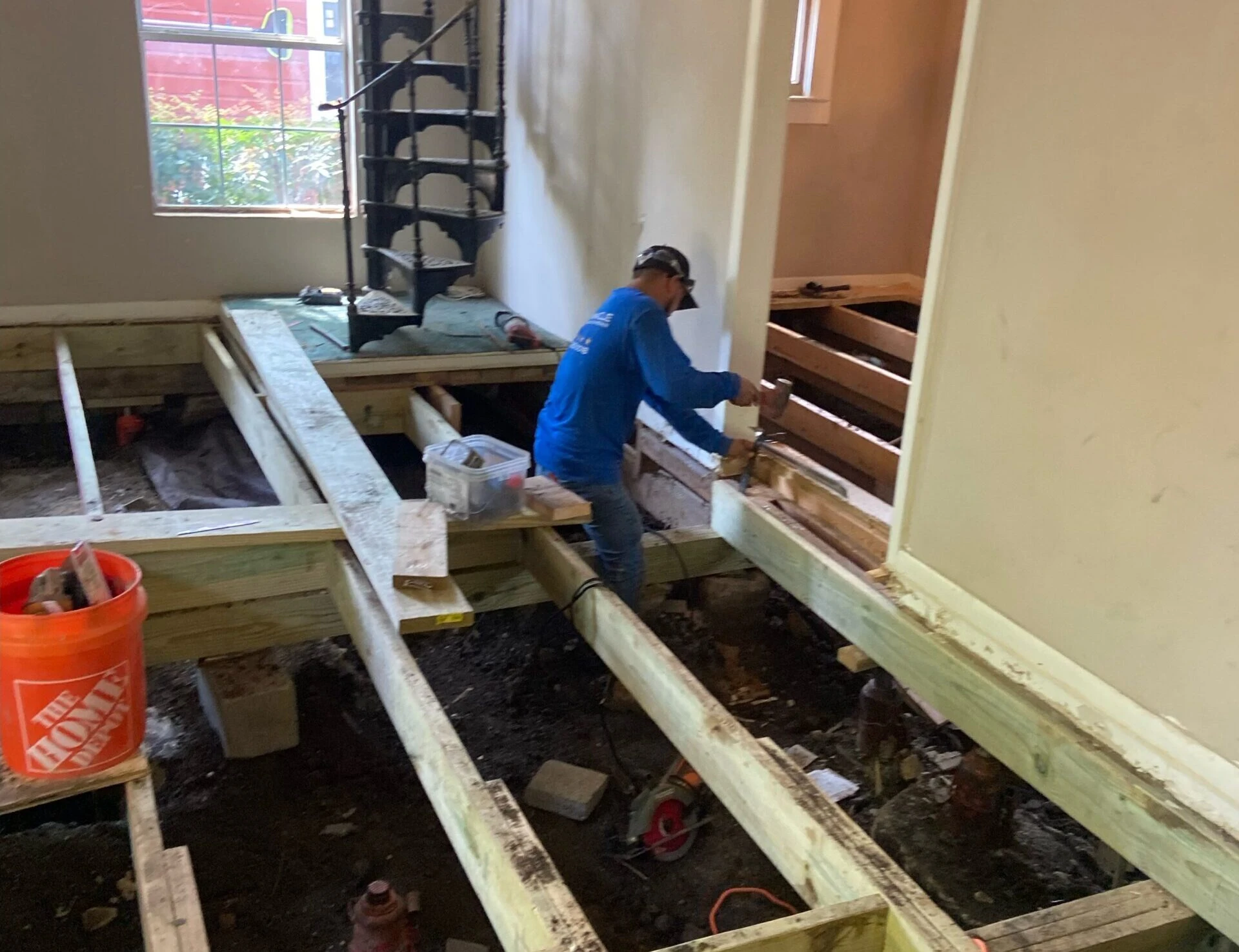
Crawl space foundations aren’t as popular in newer construction Texas homes – largely due to the switch to concrete slab foundations, which offer a solid and stable base and started gaining in popularity in the 60’s. These concrete slabs are often quicker and simpler to install, making them a favorite for builders and homeowners.
Another reason is that concrete slabs require less overall maintenance. With a crawl space, you need to keep an eye on moisture, pests, and ventilation, which can be a hassle. Plus, building a crawl space often requires more wood, which can drive up costs.
As building codes have changed, newer homes are better designed to handle the challenges of the Texas soil and climate without necessarily needing that extra space underneath. And thanks to advancements in construction techniques, modern homes can be energy-efficient and stable without the crawl space. While crawl space foundations still have their benefits, (especially on a sloped lot!) the trend is toward concrete slabs because they’re simpler and require less upkeep overall.
Foundation Maintenance Matters
No matter what type of crawl space foundation your home has, don’t forget about maintenance! Watch out for moisture, pests, and rotting beams under your home. Regular inspections can help catch potential issues early, saving you time, money, and stress in the long run.
At Pinnacle, we’ve been serving the North Texas community for three generations, and we take pride in our reputation. With over 1600 5-star Google reviews, our customers trust us to provide honest assessments and quality work. If you have concerns about repairing your crawl space foundation, whether it’s pier & beam or block & base, we’re here to help.
Next Steps: Schedule Your Free Foundation Inspection
Now that you know a bit more about crawl space foundations, it’s important to keep your home safe and secure. If you’re worried about your foundation or simply want to learn more, reach out to us at Pinnacle. We offer free foundation inspections to give you peace of mind.
If you’re having problems with your crawl space foundation, don’t wait until small issues turn into big problems. Remember, trusting the home you love to a company with generations of expertise means you’re making a smart choice for your family and your investment.
With a friendly approach and a commitment to customer satisfaction and honesty, we’re ready to help you with all your foundation needs. Let’s ensure your home stays safe and sound!

